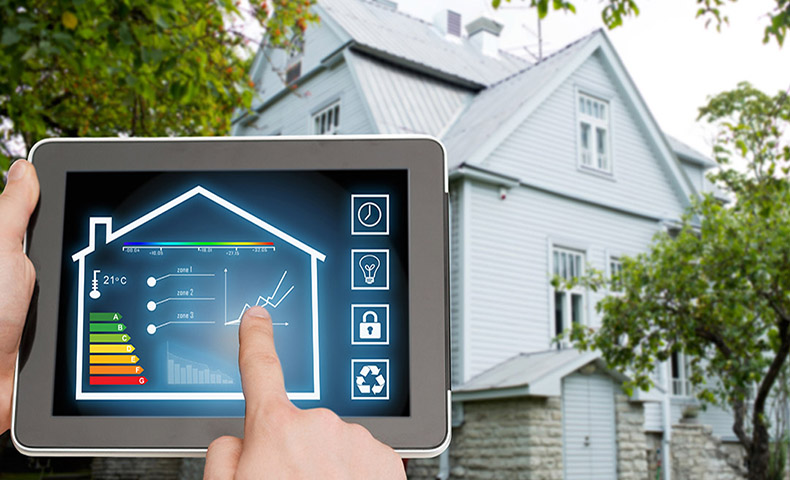
In the midst of rising home prices across the country that make it impossible for large swaths of the population to buy a home, the 27 homes in the Basalt Vista Affordable Housing Community being built by Habitat for Humanity in Western Colorado will make it easier for families in the are to become homeowners.
And they also offer another incentive: they will be net-zero, all electric homes.
Net-zero, zero-energy, or zero-carbon home means the total amount of electricity used by the house on an annual basis is roughly equal to the amount of renewable energy produced by it.
According to the Rocky Mountain Institute, an organization dedicated to research, publication, consulting, and lecturing in the general field of sustainability, with a special focus on profitable innovations for energy and resource efficiency, all-electric homes are healthy for the people living there and the planet.
“The 70 million homes and businesses in the United States that burn natural gas, oil, or propane for heating, cooking, drying clothes, and more generate 560 million tons of carbon dioxide each year. What’s more, the entire gas distribution system leaks methane, which is 80 times more polluting than carbon dioxide over a 20-year period. Overall, the use of these fuels in our buildings is responsible for upward of a billion tons of annual CO2-equivalent emissions—or 15–20 percent of total US emissions,” it notes.
Gas stoves emit pollutants—like nitrogen dioxide and carbon monoxide—into our homes, leading to asthma and other ailments.
To combat this, the two- to four-bedroom homes in the Basalt Vista community will each have a solar photovoltaic system on the roof averaging 11 kW. They will be equipped with heat pumps (which use electricity to move heat from a cool space to a warm space, both for hot water and space heating and cooling), induction stoves (which use magnetic waves to heat up pots), electric vehicle charging stations, LED lighting, and EnergyStar-rated appliances.
Net-zero energy homes are popping up everywhere, from California to Florida, and they point to the home building of the future.
Starting in 2020, all new homes in The Golden State will be required to have solar panels. And in Naples, Florida, JLH Sustainable Housing just debuted a three-bedroom home that runs completely on solar power, where the roof and walls are made mostly of recycled steel, which makes it able to sustain hurricane winds and a fire.
Your own net-zero energy home
Most homeowners can’t demolish their homes and rebuild it from scratch with all the new energy efficient features, such as those being build in Colorado and Florida.
But this doesn’t mean you can’t achieve net-zero energy.
ZeroEnergyProject.org, a nonprofit organization advocating for this type of housing, offers a 12-step guide to achieving this, and solar energy features prominently among them.
“Grid-tied solar photovoltaic (PV) panels currently provide the most cost-effective form of renewable energy for a zero energy home,” it notes.
A properly-sized home solar energy system can help you get there. When a solar installer accurately calculates your energy needs and matches it to a solar array to place on your roof or in another part of your property, you will often produce more power than you can use. That electricity is then sold to the utility in exchange for credits for the energy you get from it. Potentially, you could equal the amount of power you generate and send to the grid with how much you get from it, achieving in effect net-zero energy. You’ll only be paying for connection and maintenance fee, a fraction of what you’d be paying for power otherwise.
If you sell even more electricity than you import, you can even get a check from the utility at the end of a 12-month cycle. To find out how much a residential solar panel system will cost you, you can access the Hahasmart price checker. Just provide your address and your average monthly utility bill and you’ll get the actual price of solar panels and inverters that match your electricity needs. You’ll also get an estimated cost of installation based on thousands of completed solar projects in your area.
They’ll even explain the estimated buyback period, the point where the electricity savings achieved with your solar array cover the purchase of your residential solar panels and your system becomes free.
In addition, they’ll connect you with their installer network to get your residence equipped with solar power as quickly as possible.
Besides the installation of solar panels, you can help yourself in this endeavor by upgrading your HVAC system to something more efficient, sealing up air leaks and replacing lightbulbs with LEDs, and replacing old appliances with more efficient ones. Even things such as turning down the heat when you leave for the day, using your solar clothes dryer (a clothes line!) and turning off electronics and lights when you leave a room are also small and easy ways to reduce your energy use.
HahaSmart Blog - More Solar Tips and Guide
HahaSmart News - Stay Informed
Your Solar Incentives - See Credits and Incentives in Your Area
Check Your Home's Solar Price - See How Much You Save
Register Now - Unlock The Lowest Solar Prices in Your Area


Input your address to see if it is solar friendly and how much you can save with solar.
Great. Your address is perfect for solar. Solar incentive is still available. Select monthly utility cost and calculate the size of solar system you will need now.
| kw System size | years Payback period | Lifetime savings |
No money down, 100% finance is available.
|
|
Design the perfect solar system for your home in only a few minutes! |
Comments